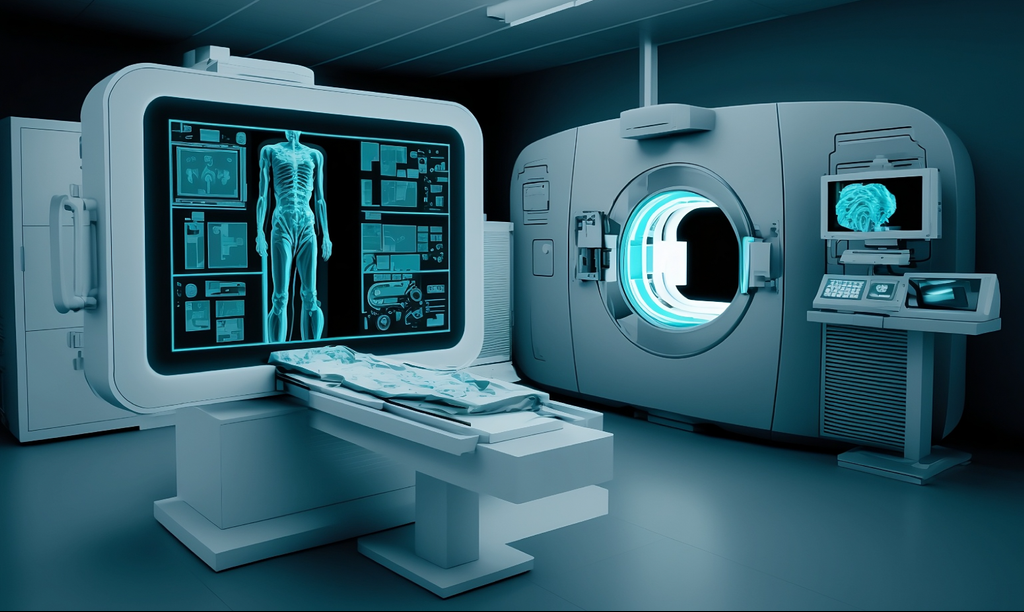Introduction
Football is a sport loved by millions worldwide, but the physical nature of the game puts players at risk of various injuries. Fortunately, advancements in medical technology have significantly improved injury diagnosis and management. Diagnostic imaging plays a pivotal role in football medicine, enabling medical professionals to assess injuries accurately and devise effective treatment plans. In this blog post, we will explore the role of different imaging modalities, including X-ray, MRI, CT scan, and ultrasound in the context of football injuries.
X-ray in Football
X-ray imaging is often the initial step in evaluating football injuries, as it provides a quick and accessible way to visualize bones. In football, X-rays are commonly used to diagnose fractures, dislocations, and bone abnormalities. While X-rays are excellent for detecting bone injuries, they have limitations in visualizing soft tissues. Therefore, in many cases, additional imaging modalities are necessary to assess the full extent of injuries.
MRI Scans in Football
MRI has revolutionised sports medicine, especially in the diagnosis of soft tissue injuries. In football, where ligament, tendon, and muscle injuries are prevalent, MRI offers unparalleled detail and precision. MRI scans can accurately detect and assess injuries like ACL tears, meniscus tears, muscle strains, and cartilage damage. This imaging modality plays a crucial role in determining the severity of injuries, guiding treatment decisions, and monitoring the healing process. Its non-invasive nature and lack of ionizing radiation make it a safe and valuable tool for football players.
Read Also
CT Scans in Football
CT scans are less commonly used in the initial evaluation of football injuries, as they prioritise bone imaging and expose patients to higher levels of radiation compared to X-rays or MRI. However, CT scans are useful for assessing bone stress injuries, complex fractures, spinal injuries, and joint abnormalities. In cases where intricate bone details are necessary, CT scans can provide three-dimensional images that aid orthopaedic surgeons in planning surgical interventions.
Ultrasound in Football
Ultrasound is a dynamic imaging technique that uses sound waves to visualise soft tissues in real-time. In football, ultrasound is frequently employed to assess muscle and tendon injuries. It allows medical professionals to observe the affected area during movement, providing valuable insights into the extent of functional impairment. Ultrasound is also useful in guiding the precise placement of therapeutic injections, such as corticosteroids or platelet-rich plasma (PRP), for accelerated healing.
Conclusion
Diagnostic imaging is an indispensable component of modern football medicine. From initial X-rays for bone injuries to advanced MRI scans for comprehensive soft tissue assessment, each imaging modality plays a crucial role in accurately diagnosing football-related injuries. Additionally, ultrasound and dynamic ultrasound offer real-time insights into soft tissue function, aiding in targeted treatment and rehabilitation plans. By leveraging these sophisticated imaging techniques, medical professionals can ensure timely and effective care, allowing football players to return to the field safely and swiftly.
Other Articles
- Back Injuries
- Fitness Training
- Foot & Ankle Injuries
- Guest Blogs
- Head Injuries
- Hip & Groin Injuries
- Knee Injuries
- Ligament Injuries
- Lower Limb Injuries
- Medical Issues
- Mobility Training
- Muscle Injuries
- Physiotherapy Treatments
- Recovery Strategies
- Rehab Technologies
- Strength & Conditioning
- Tendon Injuries
- Upper Body Injuries
- Womens Football
- Youth Injuries
